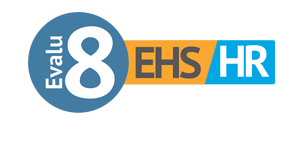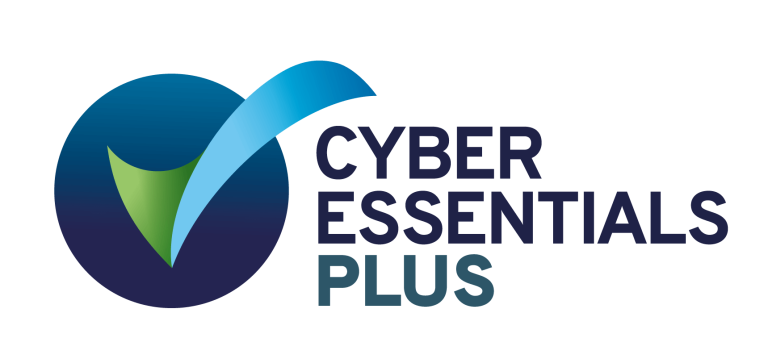In the rail industry, where safety is paramount, managing fatigue among staff is crucial. The effects of fatigue can be profound, leading to decreased alertness, slower reaction times, and even critical errors that could result in serious incidents. To effectively combat fatigue, it’s essential to understand and implement the 3 P’s of fatigue management: Prevention, Protection, and Promotion. These principles provide a comprehensive framework for keeping your team safe, healthy, and productive.
This guide will explore each of the 3 P’s in detail, providing practical advice for managers in the rail industry who are committed to improving fatigue management within their teams.
Understanding the Importance of Fatigue Management in the Rail Industry
The Impact of Fatigue on Safety
Fatigue is more than just feeling tired; it’s a state of mental and physical exhaustion that can significantly impair a person’s ability to perform tasks safely and effectively. In the rail industry, where staff are often required to work long hours, handle complex machinery, and make quick decisions, fatigue can have severe consequences.
Why Fatigue Matters
Fatigue can lead to:
- Reduced concentration and focus, making it harder to perform safety-critical tasks.
- Slower reaction times, which can be dangerous when operating or working near moving trains or heavy machinery.
- Poor decision-making, increasing the likelihood of errors that could lead to accidents or near-misses.
Given these risks, managing fatigue isn’t just about improving productivity—it’s about ensuring the safety of your employees and the passengers they serve.
The First P: Prevention
Identifying the Causes of Fatigue
The first step in managing fatigue is to prevent it from occurring in the first place. Prevention involves identifying and addressing the factors that contribute to fatigue. In the rail industry, these factors can include long shifts, irregular work hours, inadequate rest periods, and stressful working conditions.
Common Fatigue Risk Factors
- Shift Work: Working at night or on rotating shifts can disrupt the body’s natural sleep-wake cycle, leading to fatigue.
- Overtime: Excessive overtime without adequate rest can accumulate fatigue over time.
- Workload: High workload and pressure can lead to mental fatigue, even if the physical demands are not extreme.
- Environmental Factors: Poor lighting, temperature extremes, and noise can all contribute to fatigue.
Implementing Preventative Measures
Once you’ve identified the potential causes of fatigue in your team, the next step is to implement preventative measures. These measures should be designed to reduce the risk of fatigue before it becomes a problem.
Effective Scheduling
Creating a work schedule that minimises fatigue is one of the most effective preventative measures. This includes:
- Limiting shift lengths: Avoid scheduling long shifts, especially back-to-back shifts without adequate rest.
- Providing regular breaks: Ensure that employees have enough breaks during their shifts to rest and recover.
- Rotating shifts carefully: If shift rotation is necessary, try to rotate shifts forward (e.g., from day to evening to night) rather than backward, as this is less disruptive to the body’s natural rhythms.
Promoting a Healthy Work-Life Balance
Encourage your employees to maintain a healthy work-life balance. This means supporting them in taking time off to rest and recover and avoiding the culture of excessive overtime.
The Second P: Protection
Protecting Employees from the Effects of Fatigue
Even with the best preventative measures in place, there will still be times when employees experience fatigue. The second P—Protection—involves putting safeguards in place to protect employees from the effects of fatigue when it does occur.
Fatigue Monitoring Systems
Implementing fatigue monitoring systems can help you identify when employees are at risk of fatigue and take action before it leads to an incident. These systems can include:
- Wearable technology: Devices that monitor physiological signs of fatigue, such as heart rate and sleep patterns.
- Fatigue assessments: Regular checks or self-assessments where employees report their levels of alertness.
Incident Reporting and Analysis
Encourage a culture of openness where employees feel comfortable reporting when they are too fatigued to work safely. This should be supported by a robust incident reporting system that tracks fatigue-related incidents and near-misses. Analysing this data can help you identify patterns and areas where additional protective measures may be needed.
Implementing Safety Protocols
In addition to monitoring, it’s important to have safety protocols in place that protect employees when fatigue is identified. These might include:
- Mandatory rest periods: If an employee is found to be fatigued, they should be required to take a rest break or, if necessary, be sent home to rest.
- Team-based safety checks: Encourage teams to look out for each other’s well-being and step in if a colleague appears fatigued.
The Third P: Promotion
Promoting Awareness and Education
The third P—Promotion—involves promoting awareness and education around fatigue management. This is about creating a culture where fatigue is recognised as a serious issue and where everyone is committed to managing it effectively.
Training and Workshops
Offer regular training sessions and workshops on fatigue management. These should cover:
- The signs and symptoms of fatigue: Helping employees recognise when they or their colleagues might be fatigued.
- The importance of sleep: Educating employees on the benefits of good sleep hygiene and how to improve the quality of their sleep.
- Stress management techniques: Providing tools and techniques for managing stress, which is a common contributor to fatigue.
Communication and Engagement
Keep the conversation about fatigue management ongoing. Use regular communications—such as newsletters, team meetings, and posters—to remind employees of the importance of managing fatigue and the resources available to them.
Encouraging a Supportive Culture
Creating a supportive culture is key to the success of any fatigue management programme. This means fostering an environment where employees feel supported in managing their fatigue and where they know that their health and safety are priorities.
Leadership Involvement
Ensure that leadership is visibly involved in fatigue management efforts. When managers and supervisors prioritise fatigue management, it sends a strong message to employees about its importance.
Employee Involvement
Involve employees in the development and implementation of fatigue management initiatives. This not only ensures that the measures are relevant and effective but also increases buy-in from the workforce.
Prioritising Safety Through Effective Fatigue Management
Managing fatigue is not just a box-ticking exercise; it’s a critical component of ensuring safety and well-being in the rail industry. By focusing on the 3 P’s of fatigue management—Prevention, Protection, and Promotion—you can create a safer working environment for your team, reduce the risk of fatigue-related incidents, and promote a culture of health and safety that benefits everyone.
Whether you’re fine-tuning your current fatigue management strategies or starting from scratch, remember that the goal is to keep your team alert, safe, and effective. By taking proactive steps to manage fatigue, you’re investing in the long-term success and sustainability of your operations.
Common questions about the 3 P’s of fatigue management
What are the 3 P’s of fatigue management?
The 3 P’s of fatigue management are Prevention, Protection, and Promotion. These principles provide a comprehensive framework for managing fatigue by preventing it from occurring, protecting employees when fatigue is present, and promoting awareness and education around the issue.
How can I prevent fatigue among rail staff?
Prevention involves identifying and addressing factors that contribute to fatigue, such as long shifts, irregular work hours, and high workloads. Effective scheduling, providing regular breaks, and encouraging a healthy work-life balance are key strategies for preventing fatigue.
What is meant by ‘Protection’ in fatigue management?
Protection refers to the safeguards and protocols put in place to protect employees from the effects of fatigue when it occurs. This includes using fatigue monitoring systems, implementing safety protocols like mandatory rest periods, and encouraging team-based safety checks.
How can I promote awareness about fatigue management in my team?
Promoting awareness involves educating employees about the importance of managing fatigue through training, workshops, and regular communications. Creating a supportive culture where fatigue is openly discussed and managed is also crucial for effective promotion.
Why is fatigue management important in the rail industry?
Fatigue management is vital in the rail industry due to the safety-critical nature of the work. Fatigue can lead to reduced concentration, slower reaction times, and poor decision-making, all of which can result in serious accidents. Effective fatigue management ensures the safety of both staff and passengers.


